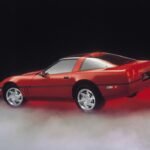Is there a vehicle more intrinsically linked to the spirit of American automotive passion than the Chevrolet Corvette? While brands like Ford and Jeep hold their own iconic statuses, the Corvette reigns supreme as the quintessential American sports car.
Since its debut in the 1950s, the Corvette has captured the hearts of Americans. Across eight distinct generations, this two-door marvel has transformed from a charming roadster into an aggressively styled, mid-engine powerhouse capable of challenging Europe’s finest sports cars. Though the modern C8 generation appears worlds apart from the original C1, each iteration of the Corvette has consistently represented Chevrolet’s performance pinnacle and its most visually striking model.
As we celebrate the Corvette’s 70th anniversary, it’s the perfect moment to delve into the captivating journey of this legendary nameplate. The Corvette has undergone significant transformations over the decades, yet its core essence remains unchanged: it embodies the ultimate cool factor in American automotive design and engineering.
A Deep Dive into the Chevy Corvette’s Generational Evolution
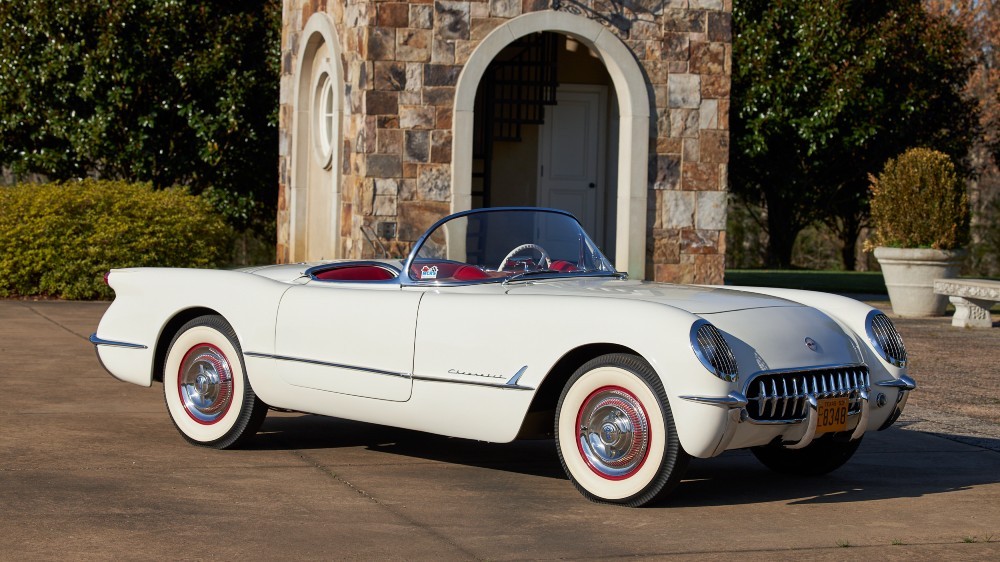 1953 Chevrolet Corvette
1953 Chevrolet Corvette
Image alt text: 1953 Chevrolet Corvette C1, the first generation of America’s iconic sports car, in Polo White.
In the early 1950s, Chevrolet faced a period of declining sales and needed a spark to reignite public interest. Harley Earl, GM’s design visionary, observed the growing trend of American GIs returning from Europe with a newfound appreciation for British sports cars. He proposed the concept of an American-made equivalent, igniting enthusiasm within General Motors and initiating the Corvette’s development. The Corvette made its grand entrance at the GM Motorama in New York in January 1953. The public’s enthusiastic response propelled Chevrolet to fast-track the Corvette into production.
Initially, the Corvette, equipped with an inline-six engine and a two-speed automatic transmission, wasn’t an immediate sensation, selling just around 300 units in its first year. Sales improved in the subsequent years, but the Corvette’s legendary status was not yet solidified. A turning point arrived in 1955 with the influence of engineer Zora Arkus-Duntov, now revered as the “Father of the Corvette.” Arkus-Duntov championed the introduction of a V-8 engine, marking a pivotal shift in the Corvette’s trajectory. The following year brought a design refresh, featuring a new grille and headlamps. This evolution transformed the Corvette from an American interpretation of a European sports car into a genuine contender in its own right.
Through continuous refinement during its first generation, Chevrolet discovered the winning formula. While Corvette’s design and engine capabilities have dramatically progressed over the years, by 1956, its identity as Chevrolet’s halo car and an object of widespread driver adoration was firmly established. This enduring appeal, spanning generations, is evident in the 1.7 million Corvettes sold – a remarkable achievement, especially for a consistently high-priced American vehicle.
Corvette Model Generations: A Visual and Performance Journey
The C1 Corvette (1953-1962): Genesis of a Legend
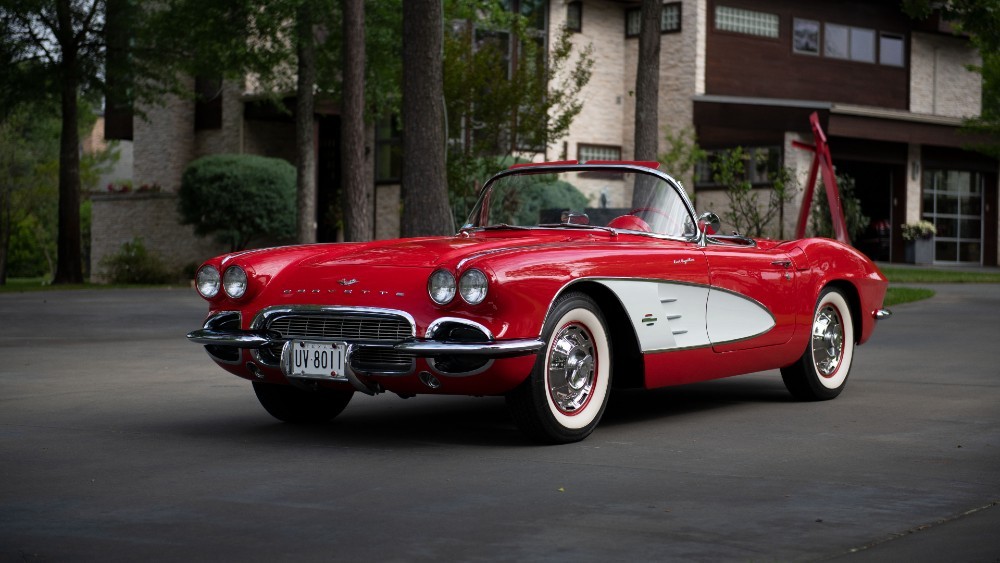 1961 Chevrolet C1 Corvette
1961 Chevrolet C1 Corvette
Image alt text: 1961 Chevrolet Corvette C1 showcasing the refined design of the first generation, with its iconic quad headlights.
The C1 generation is arguably the most transformative in Corvette history. The initial 1953 model, emerging swiftly after the GM Motorama, was more of a prototype than a polished product. It debuted as a compact roadster, exclusively in Polo White with a red interior and a black convertible top, mirroring the British sports cars of Jaguar and MG. The C1’s true form emerged with the 1956 redesign. It grew in size and adopted a new front fascia reminiscent of the Mercedes-Benz 300 SL. The final year of the C1 saw the introduction of the Corvette’s signature quad-taillights, a design element that persists to this day.
Beyond aesthetics, the C1 underwent a rapid performance evolution. Starting with a 150hp 3.9-liter inline-six engine paired with a two-speed automatic transmission, the Corvette’s performance was initially modest. However, 1955 marked a turning point with the introduction of a 195hp 4.3-liter V-8 engine and a three-speed manual gearbox, transforming the Corvette into a true sports car. By the end of the C1 era, a fuel-injected 5.4-liter V-8, producing up to 360 horsepower, was available, signaling the Corvette’s growing performance prowess.
The C2 Corvette (1963-1967): Sting Ray and Performance Innovation
 A 1963 Corvette Z06.
A 1963 Corvette Z06.
Image alt text: 1963 Corvette C2 Z06, the first performance-oriented variant of the Sting Ray generation, in Sebring Silver.
By 1962, the Corvette was a resounding success, yet Chevrolet unveiled a completely redesigned C2 in 1963. The C2 was sleeker and more compact than its predecessor, most notably introducing the coupe variant named Sting Ray (later “Stingray”). The initial Sting Ray coupe featured a distinctive split-window design. Both coupe and convertible models exuded sportiness, yet many Corvette aficionados consider the C2 to possess an unmatched elegance.
Performance remained a priority. By the C2’s inception, V-8 engines were the standard. In 1965, Chevrolet transitioned from small-block to big-block V-8 engines, unleashing significantly more power. In 1967, the final year of the C2, a 7.0-liter big-block V-8 with a 3×2-barrel carburetor configuration delivered a staggering 435 horsepower and 460 lb-ft of torque.
The C2 generation also marked the debut of the Z06 performance package in 1963. This package offered customers a track-ready Corvette, featuring upgrades like a dual master cylinder, enhanced shock absorbers, and a larger front anti-roll bar.
The C3 Corvette (1968-1982): Mako Shark Styling and Cultural Icon
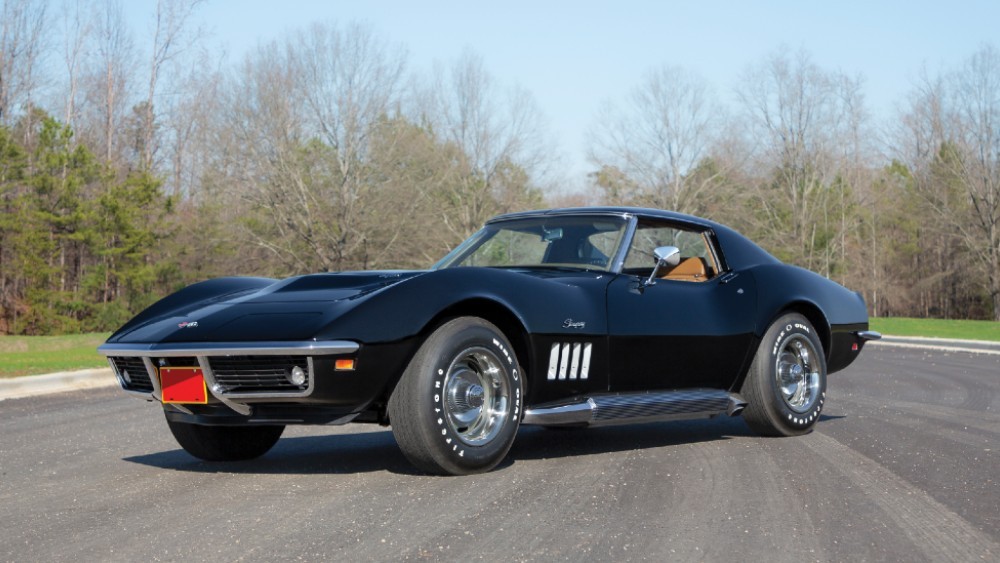 1969 Chevrolet C3 Corvette Stingray
1969 Chevrolet C3 Corvette Stingray
Image alt text: 1969 Chevrolet Corvette C3 Stingray, embodying the “Coke bottle” styling and removable roof panels, in LeMans Blue.
While the C2 is often lauded for its refinement, the C3, launched in 1968, is celebrated for its bold and flamboyant design. Inspired by Larry Shinoda’s Mako Shark II concept car, the C3 boasted a dramatically curved “Coke bottle” body. It also introduced removable roof panels, offering all Corvette drivers an open-air experience. The C3’s daring design resonated with the public, becoming a cultural icon, famously associated with figures like Joan Didion, pictured with her white 1969 Stingray. In 1977, the 500,000th Corvette rolled off the production line, a testament to the C3’s popularity.
Mechanically, the C3 was largely carried over from the C2. While V-8 engines remained standard, the rapid performance advancements of the earlier generations plateaued. Nevertheless, early C3 models offered a potent 7.0-liter LS7 V-8, delivering up to 460 horsepower – the most powerful engine in the Corvette’s first three decades. However, by the end of its production run, the C3’s engine options had become more modest, with a 200 horsepower V-8 and a four-speed automatic transmission.
The C4 Corvette (1984-1996): Modernization and Technological Advancement
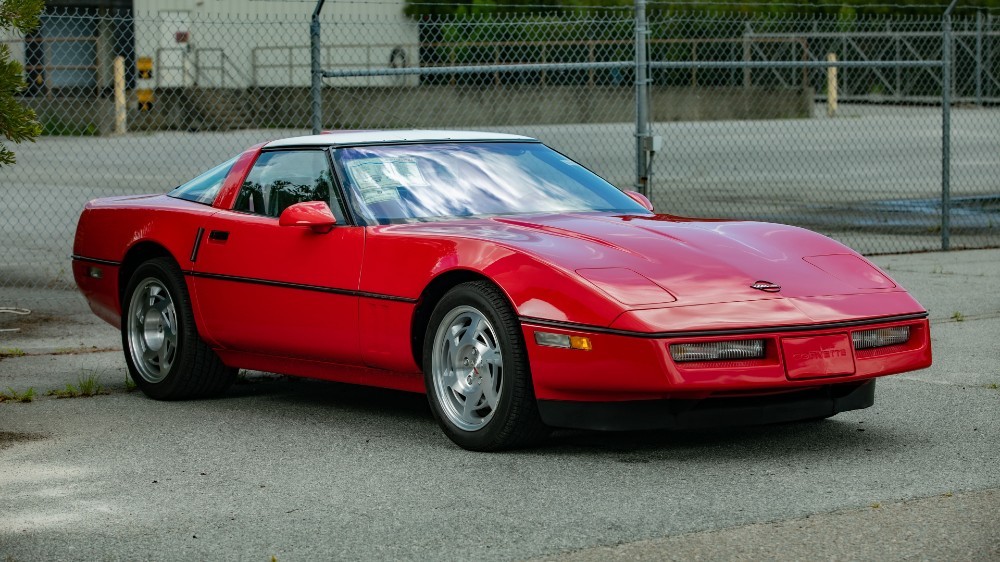 1990 Chevrolet C4 Corvette ZR1
1990 Chevrolet C4 Corvette ZR1
Image alt text: 1990 Chevrolet Corvette C4 ZR1, showcasing the angular design and high-performance capabilities of the fourth generation, in Bright Red.
The C4 generation marked the Corvette’s transition into a thoroughly modern sports car. A complete redesign from the ground up, the first since 1963, debuted as a 1984 model (with a few 1983 models built but largely destroyed). The C4 featured a cleaner, more angular aesthetic than its predecessors. It was the first Corvette to abandon fiberglass body panels and the targa version featured a glass hatchback. A 1991 refresh ensured the C4 remained contemporary, and its sleek design endures today.
The C4 initially launched with a carryover V-8 engine from the late C3, albeit with a slight power increase. By 1991, every Corvette boasted at least 300 horsepower, a first for the model. The ZR1 package offered even greater performance, featuring a 405 horsepower 5.7-liter LT5 V-8 in its final years. The Grand Sport variant, with a 330 horsepower LT4 V-8 and manual transmission, paid homage to the 1960s Corvette Grand Sport race cars.
The C4 era also witnessed the production of the 1,000,000th Corvette, just 13 years after the 500,000th. Echoing the original C1, this milestone car was a Polo White convertible with a red interior and black top.
The C5 Corvette (1997-2004): Refinement and Return of the Z06
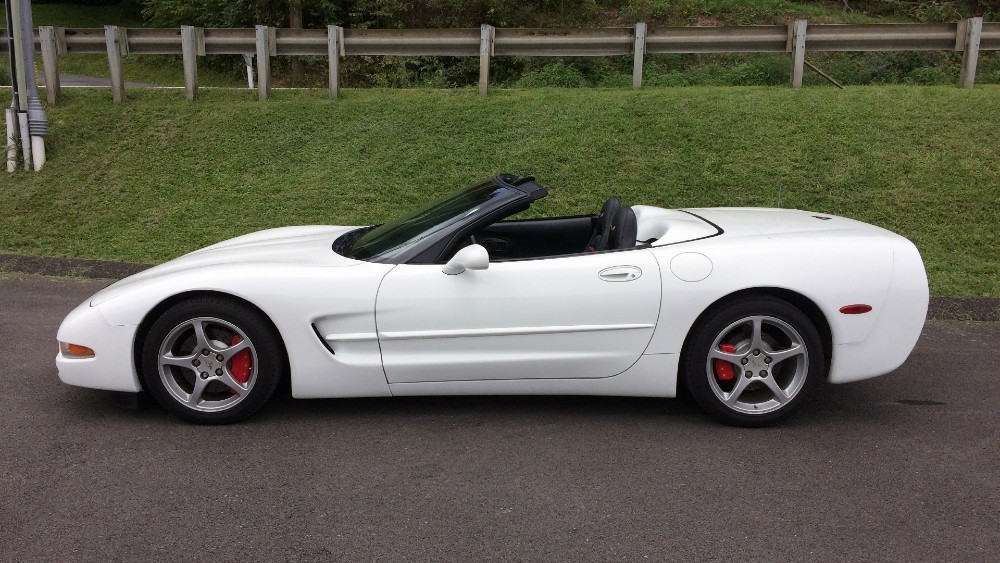 1998 Chevrolet C5 Corvette
1998 Chevrolet C5 Corvette
Image alt text: 1998 Chevrolet Corvette C5, exhibiting the evolutionary design and improved aerodynamics of the fifth generation, in Sebring Silver Metallic.
The C5, introduced in 1997, represented an evolution rather than a revolution compared to the C4. While visually similar, the C5 was curvier, larger, longer, and wider. Three body styles were offered: targa, convertible, and, from 1999, a fixed-roof coupe, which became the entry-level Corvette for the next five years and offered increased stiffness and reduced weight.
The C5 generation brought significant power upgrades. The all-new LS1 V-8 engine, paired with either a four-speed automatic or six-speed manual, delivered 345 horsepower from the outset. While a ZR1 variant was absent, the Z06 nameplate returned after a long hiatus since 1967. The Z06, a lightweight, performance-focused model, featured a specially tuned LS1 engine producing 405 horsepower, enabling 0-60 mph acceleration in just 4.5 seconds. The C5 also spawned the C5-R grand touring race car, achieving class victories at prestigious events like the 24 Hours of Daytona and 24 Hours of Le Mans.
The C6 Corvette (2005-2013): Exposed Headlights and Power Surge
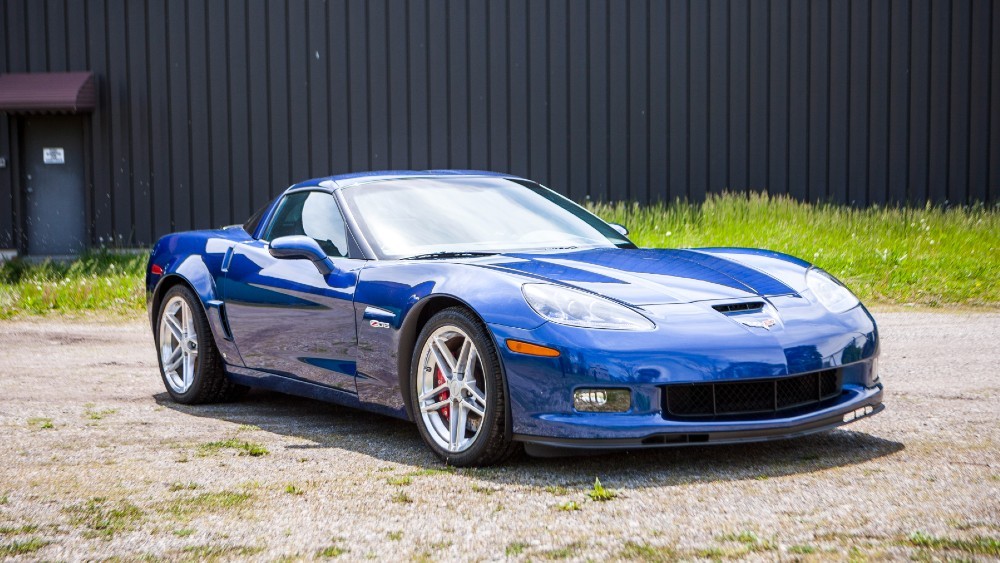 2006 Chevrolet C6 Corvette Z06
2006 Chevrolet C6 Corvette Z06
Image alt text: 2006 Chevrolet Corvette C6 Z06, featuring the return of exposed headlights and enhanced performance, in Velocity Yellow.
The C6, debuting in 2005, maintained a visual lineage with its immediate predecessors, but with a notable change: exposed headlights, a feature last seen on the C1 in 1962. Beyond this, the C6 refined the profile established since 1984, with cleaner lines. Targa, convertible, and hard-top coupe (reserved for high-performance models) body styles continued to be offered.
Engine advancements were central to the C6. The LS2 engine, a larger and more potent iteration of the previous generation’s engine, became standard, producing 400 horsepower and 400 lb-ft of torque. In 2008, the even more powerful 6.2-liter LS3 V-8, generating 430 horsepower and 424 lb-ft of torque, replaced the LS2. The Z06 variant (and later the 60th Anniversary 427 Convertible) boasted the 7.0-liter LS7 V-8, delivering an impressive 505 horsepower and 470 lb-ft of torque, enabling 0-60 mph acceleration in 3.4 seconds and a 190 mph top speed. The C6 Z06 firmly established the Corvette as the king of American sports cars, even alongside the Dodge Viper.
The C7 Corvette (2014-2019): Aggressive Styling and Aerodynamic Focus
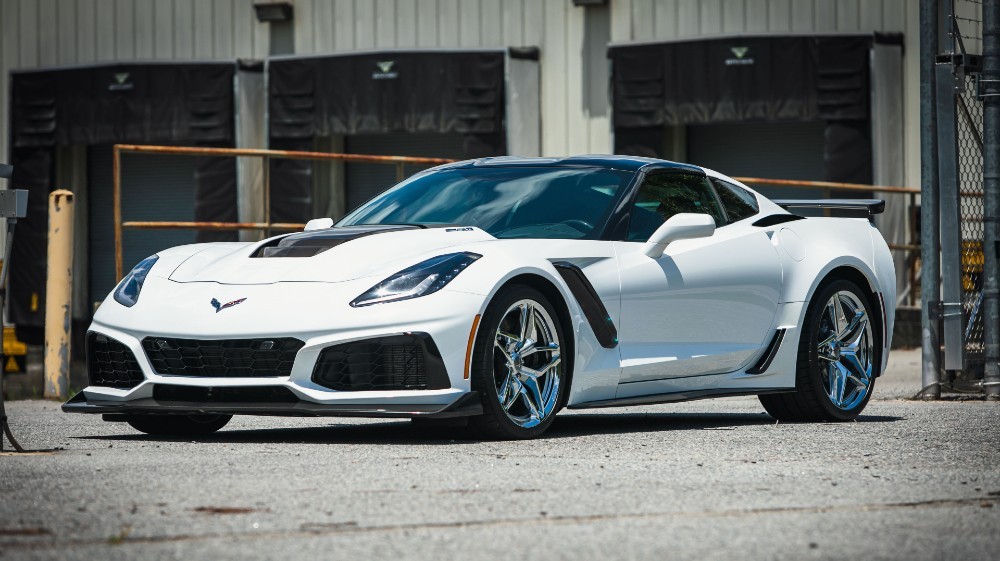 2019 Chevrolet C7 Corvette ZR1
2019 Chevrolet C7 Corvette ZR1
Image alt text: 2019 Chevrolet Corvette C7 ZR1, displaying the aggressive styling, aerodynamic enhancements, and powerful presence of the seventh generation, in Sebring Orange Tintcoat.
After nearly three decades of evolutionary design, Chevrolet significantly revamped the Corvette’s styling with the C7 in 2014. It adopted a more aggressive and angular design with a pronounced rear end. The C7 incorporated a carbon-fiber hood and removable roof panels and marked the return of the Stingray name since 1968. High-performance C7 variants pushed the design further, with the Z06 featuring enhanced aerodynamics, the Grand Sport wider bodywork, and the ZR1 a prominent rear wing.
While a mid-engine layout was considered, the C7 retained a front-engine configuration, housing potent engines. The base 6.2-liter LT1 V-8 produced 455 horsepower and 460 lb-ft of torque, allowing even the base C7 to achieve sub-four-second 0-60 mph times and a 186 mph top speed. The Z06 featured a supercharged 6.2-liter LT4 V-8 producing 650 horsepower and 650 lb-ft of torque. The ZR1, the pinnacle of the C7 range, paired its massive wing with a 755 horsepower and 715 lb-ft of torque 6.2-liter LT5 V-8 equipped with a 2.6-liter Eaton supercharger – the most powerful engine in Corvette factory history.
The C8 Corvette (2020-Present): Mid-Engine Revolution and Global Ambition
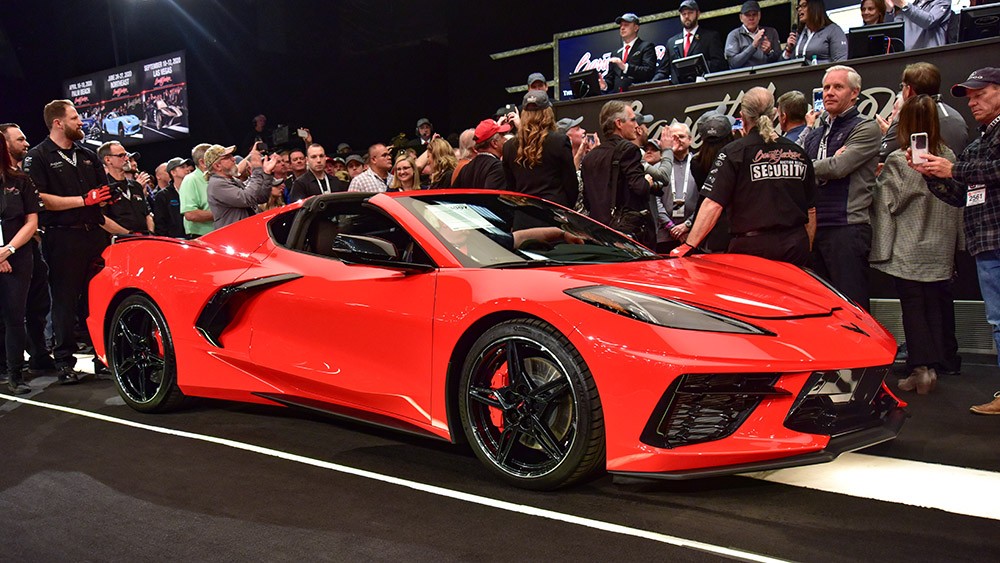 2020 Chevrolet Corvette C8
2020 Chevrolet Corvette C8
Image alt text: 2020 Chevrolet Corvette C8 Stingray, the groundbreaking mid-engine Corvette, representing a paradigm shift in design and performance, in Torch Red.
The C8 Corvette represents the most radical evolutionary leap in the Corvette’s lineage. Unveiled in 2019, the C8 is a complete departure from previous generations, showcasing sharp angles and aggressive lines throughout. It firmly positions the Corvette as a leading contender in contemporary sports car design.
The most significant change lies in the mid-engine configuration, a concept long rumored and finally realized. This shift aligns the Corvette with European sports car benchmarks from Porsche and Ferrari. The base Stingray and convertible C8 models feature a 490 horsepower and 455 lb-ft of torque 6.2-liter LT2 V-8. The Z06 variant boasts an even more impressive 670 horsepower and 460 lb-ft of torque 5.5-liter DOHC V-8 with a flat-plane crank, delivering a distinctive and exhilarating engine note. While currently the most powerful C8, upcoming hybrid and all-electric Corvette models may surpass it.
RELATED: The Chevy C8 Corvette: Exploring the Mid-Engine Transformation
While seemingly the most distinct from the original C1, the C8 arguably returns to the Corvette’s foundational ambition: to create an American sports car capable of competing with the best of Europe.
The Future of Corvette: Expanding Horizons
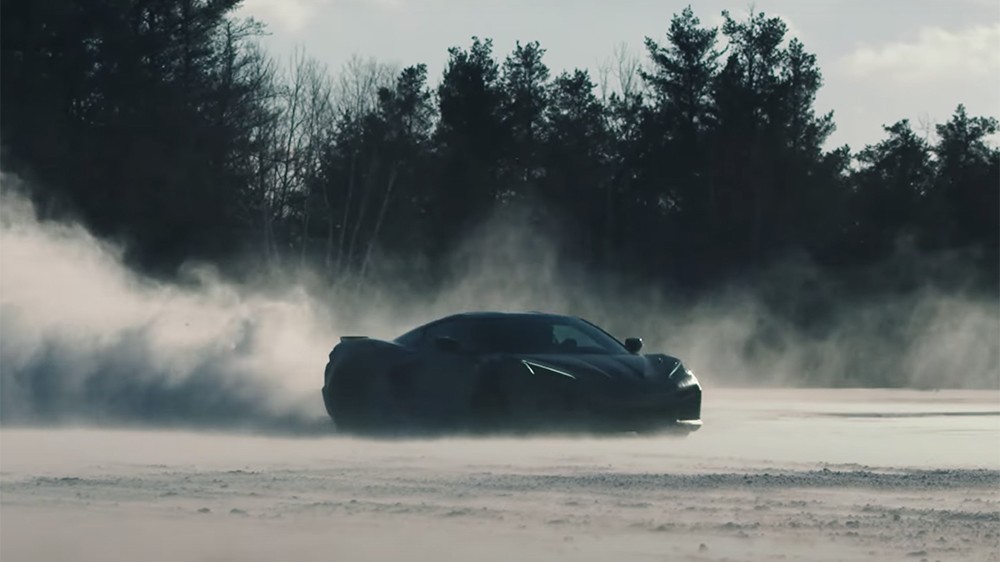 A hybrid Chevrolet C8 Corvette prototype undergoing cold-weather testing
A hybrid Chevrolet C8 Corvette prototype undergoing cold-weather testing
Image alt text: Chevrolet C8 Corvette hybrid prototype undergoing cold-weather testing, hinting at the electric future of the Corvette brand.
Beyond electrification, Chevrolet is exploring ambitious expansions for the Corvette, potentially transforming it into a standalone sub-brand by the mid-2020s.
Reports suggest that Corvette could evolve from a model line into a full vehicle lineup by 2025, potentially including a four-door coupe and a robust SUV, all sharing the C8’s design language and performance DNA. While Chevrolet remains officially non-committal, the prospect of a broader Corvette family is generating considerable excitement.
After seven decades, the Corvette continues to inspire unwavering loyalty and enthusiasm, a testament to its enduring legacy and ongoing evolution.
